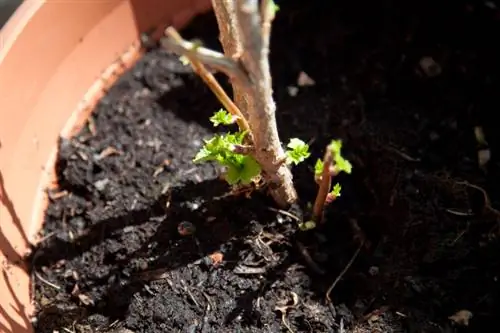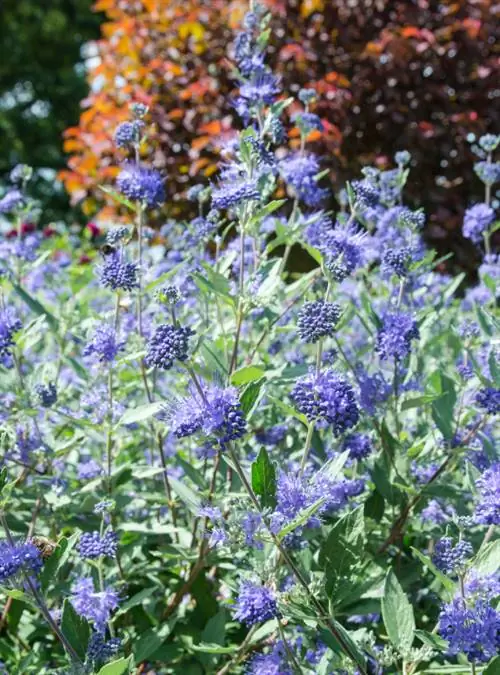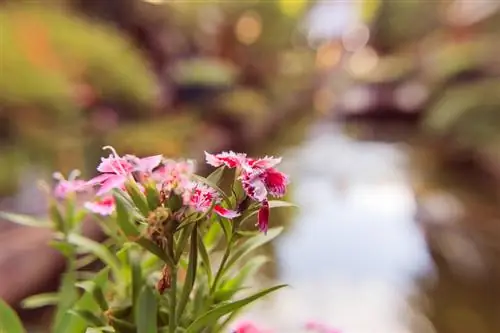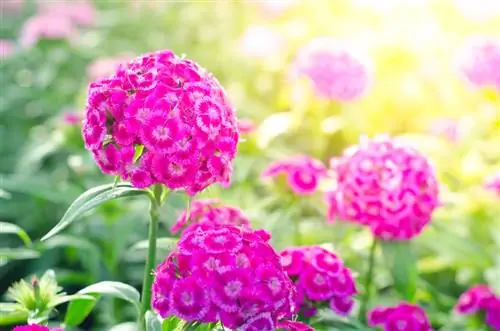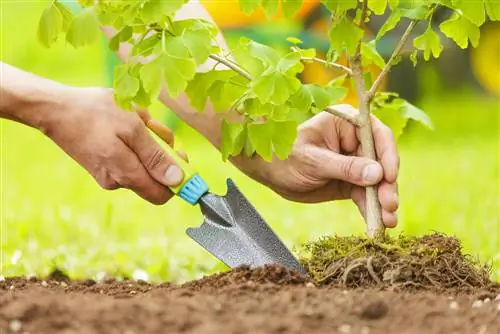- Author admin [email protected].
- Public 2023-12-16 16:46.
- Last modified 2025-01-23 11:22.
Beard flowers (Caryopteris) originally come from China. The hybrid Caryopteris x clandonensis is usually offered for the garden. The most famous variety is “Heavenly Blue”. Since it hardly develops flowers in shady locations, you should transplant the subshrub if necessary.
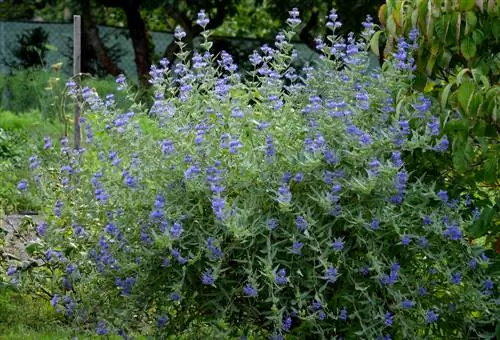
When and how to transplant bearded flowers correctly?
It is best to transplant the bearded flower in spring until the end of March. Dig deeply to reach the roots, carefully lift out the root ball and replant the subshrub in a sunny, well-drained location. Please note that older specimens may need pruning.
When is the optimal time to transplant bearded flowers?
The best time to transplant the bearded flower is inSpring According to the calendar, the subshrub should move to its new location by the end of March. If the weather does not allow this due to frost and snow, you can alternatively transplant the partially hardy Clandon bearded flower in October after the leaves have fallen. In this case, however, the bearded flower needs winter protection in the root area.
How do I transplant the bearded flower?
Beard flowers are deep roots. Therefore, when transplanting, you mustdig deeply in order to reach as many roots as possible. Proceed as follows:
- Dig up the bearded flower and carefully lift out the root ball
- Create a planting hole of approximately the same size at the new location
- Loosen the soil well at the bottom, mix with sand if necessary
- Insert half-shrub in the middle
- Fill planting hole
- Tread the earth lightly
- Pouring
Does the bearded flower need special care after transplanting?
The bearded flower needsspecial careafter transplantingnot If they are larger and older specimens, you should cut them back. This makes it easier for the plants to grow. Fertilize bearded flowers transplanted in autumn for the first time in March at the new location.
Tip
Repotting the bearded flower in the bucket
Beard flowers that are kept in pots should only be repotted in spring. To prevent waterlogging, you should create a drainage layer at the bottom of the planter.


